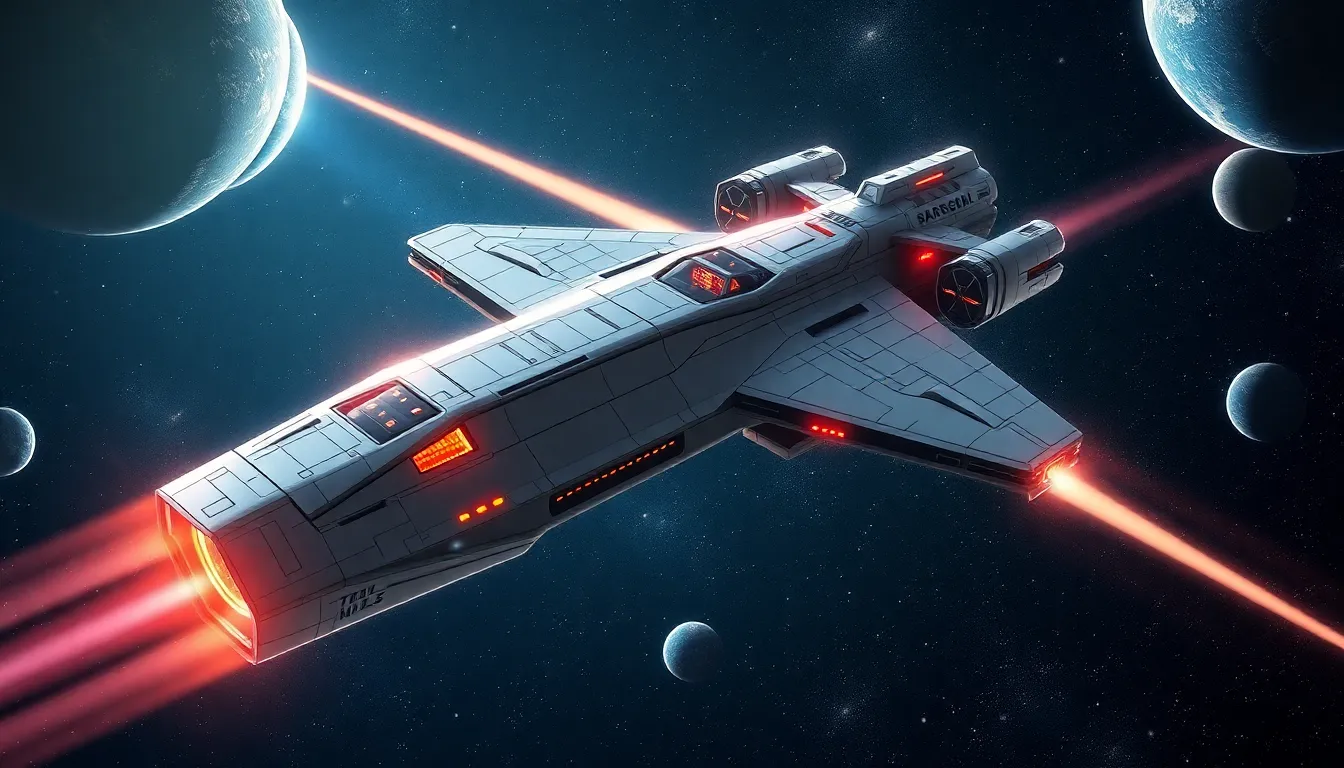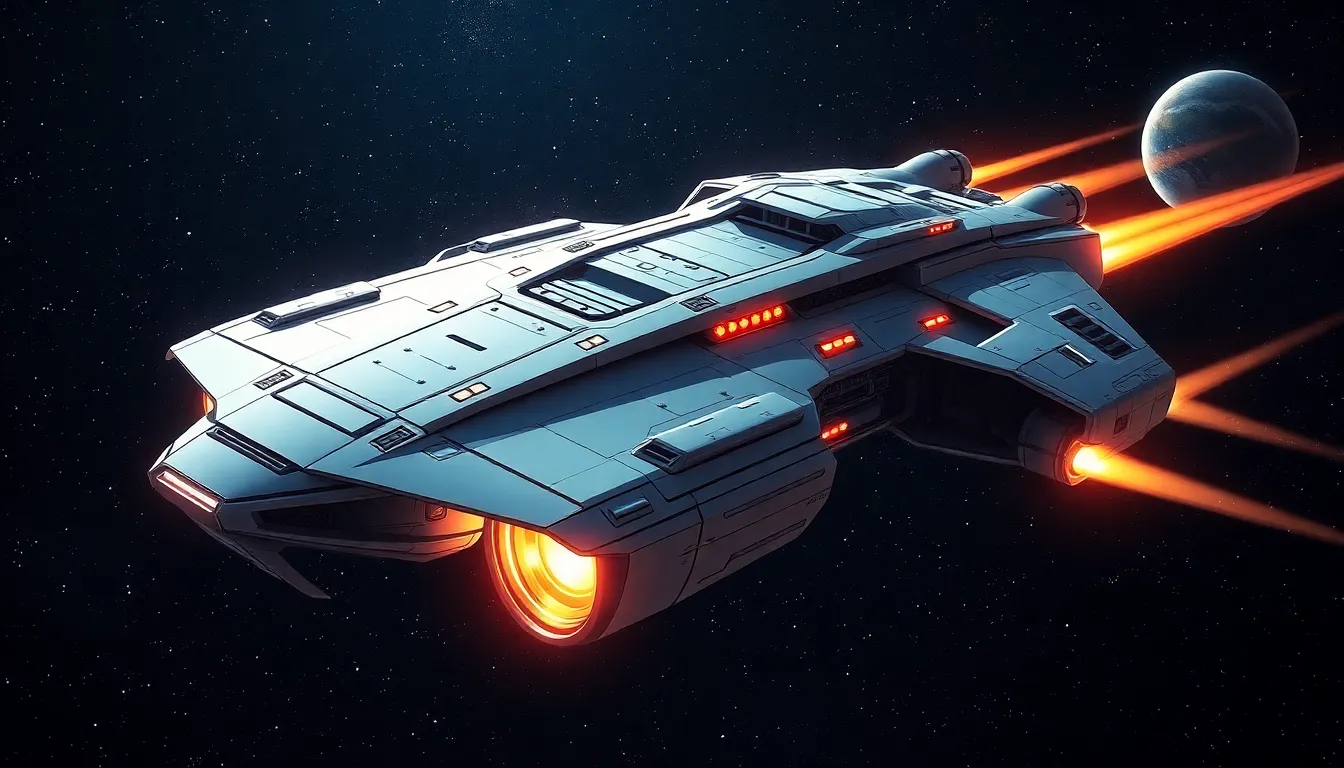Imagine zipping through the cosmos like it’s a Sunday drive, with the Milky Way as your scenic route. Future space travel technology promises to turn this dream into reality, making interstellar jaunts as common as weekend road trips. With advancements that sound like they’re straight out of a sci-fi movie, humanity stands on the brink of a cosmic revolution.
Table of Contents
ToggleOverview of Future Space Travel Technology
Future space travel technology focuses on innovative advancements that enhance expeditions beyond Earth. Breakthroughs in propulsion systems, such as ion drives and nuclear thermal engines, promise faster and more efficient travel to distant planets. Resources from asteroids and the Moon might support long-term missions by providing necessary materials.
Spacecraft design evolves to support crew safety and comfort during extended journeys. Modular and reusable spacecraft allow for flexibility in missions while reducing costs. Artificial intelligence plays a critical role in navigation and decision-making, improving overall mission efficiency.
Habitat technologies also advance, enabling astronauts to live and work in inhospitable environments. Closed-loop life support systems recycle air and water, making long-duration missions possible. Advances in radiation shielding protect crews from cosmic rays and solar flares, increasing overall safety.
Furthermore, international partnerships are crucial in developing these technologies. Collaborative efforts, such as the Artemis program, aim to establish a sustainable human presence on the Moon, serving as a stepping stone for future Mars exploration. By sharing expertise and resources, nations can accelerate advancements in space travel.
Exploration missions to Mars showcase the application of these technologies in real-world scenarios. The Perseverance rover and the Mars Helicopter demonstrate significant progress in robotics and automation. Return missions to the Moon aim to test new technologies that facilitate human exploration of deeper space.
The possibilities of human space travel look promising thanks to these advancements. As humanity approaches the horizon of space exploration, the convergence of technology and collaboration will redefine what it means to explore the universe.
Current Trends in Space Exploration


Current trends reveal significant advancements in space exploration technology. As these innovations emerge, they reshape humanity’s approach to navigating the cosmos.
Advancements in Propulsion Systems
Ion drives and nuclear thermal engines showcase leading propulsion technologies. Ion drives provide efficient thrust with minimal fuel, enabling longer missions. Nuclear thermal engines increase speeds significantly, making distant planet travel feasible. Research institutions and private companies actively pursue these technologies, promising more efficient space travel. The emergence of hybrid propulsion systems enhances versatility in missions. With various propulsion options, missions can adapt better to specific goals.
Innovations in Spacecraft Design
Innovative spacecraft designs focus on crew safety and mission success. Modular spacecraft facilitate repair and upgrades, increasing longevity. Reusable spacecraft reduce costs and enhance mission frequency, optimizing resource utilization. New designs prioritize comfort during long-duration flights, with improved living quarters. AI integration streamlines navigation, allowing for real-time adjustments during missions. In addition, advancements in radiation shielding promise enhanced protections for astronauts in deep space. These design trends prepare humanity for more ambitious exploration.
Challenges Facing Future Space Travel
Future space travel faces significant challenges that could affect its progression. Addressing funding, technical, and logistical obstacles is essential for successful exploration.
Funding and Resource Allocation
Funding remains a primary concern for space agencies and private companies. Public and private partnerships can provide necessary financial backing. Government budgets, often strained, may limit the pool of resources available for ambitious projects. Innovative methods, like crowdfunding and international collaborations, can supplement funding. Efficient use of funds enhances mission feasibility and productivity. Resource allocation impacts the development timeline of advanced technologies. Prioritizing investments in critical areas, such as propulsion systems and habitat technologies, shapes future exploration efforts.
Technical and Logistical Hurdles
Technical hurdles present challenges in designing and building reliable spacecraft. Engineering efficient propulsion systems demands advanced materials and cutting-edge technology. Logistical issues continue to complicate mission planning, particularly for long-duration flights. Developing life support systems that sustain human life in space requires extensive research and testing. Safety measures must evolve to counteract radiation exposure and microgravity effects. Coordinating these elements complicates operations and extends project timelines. Furthermore, ensuring compatibility among diverse technologies fosters mission success.
Potential Technologies Shaping the Future
Innovative technologies are set to redefine space travel. These advancements promise to make journeys through the cosmos more efficient and accessible.
Space Elevators and Hyperloop Systems
Space elevators represent a revolutionary concept, allowing vehicles to ascend into orbit without traditional rocket propulsion. These structures use strong materials, such as carbon nanotubes, to support immense weights over long distances. Hyperloop systems aim to transport passengers from Earth to launch sites at unprecedented speeds, enhancing overall efficiency. Both systems contribute to reducing travel times and costs associated with space missions, enabling regular access to orbit.
The Role of AI and Robotics
AI and robotics significantly enhance space exploration capabilities. Intelligent systems assist with navigation, monitor spacecraft health, and automate routine tasks to reduce astronaut workload. Advanced robotics facilitate repairs and maintenance in hostile environments, allowing for extended missions. These technologies increase safety while improving decision-making efficiency in real-time. As they develop further, AI and robotics will become indispensable in enabling humanity’s journey deeper into space.
The future of space travel technology holds immense promise. As advancements in propulsion systems and spacecraft design continue to evolve, humanity stands on the brink of a new era in exploration. The integration of AI and innovative habitat technologies will enhance astronaut safety and comfort, making long-duration missions more viable.
International collaborations like the Artemis program pave the way for sustainable lunar presence and eventual Mars exploration. While challenges such as funding and technical hurdles remain, the ongoing dedication of research institutions and private companies fuels optimism. With each breakthrough in technology and strategy, the dream of routine interstellar travel inches closer to reality, inspiring generations to reach for the stars.




